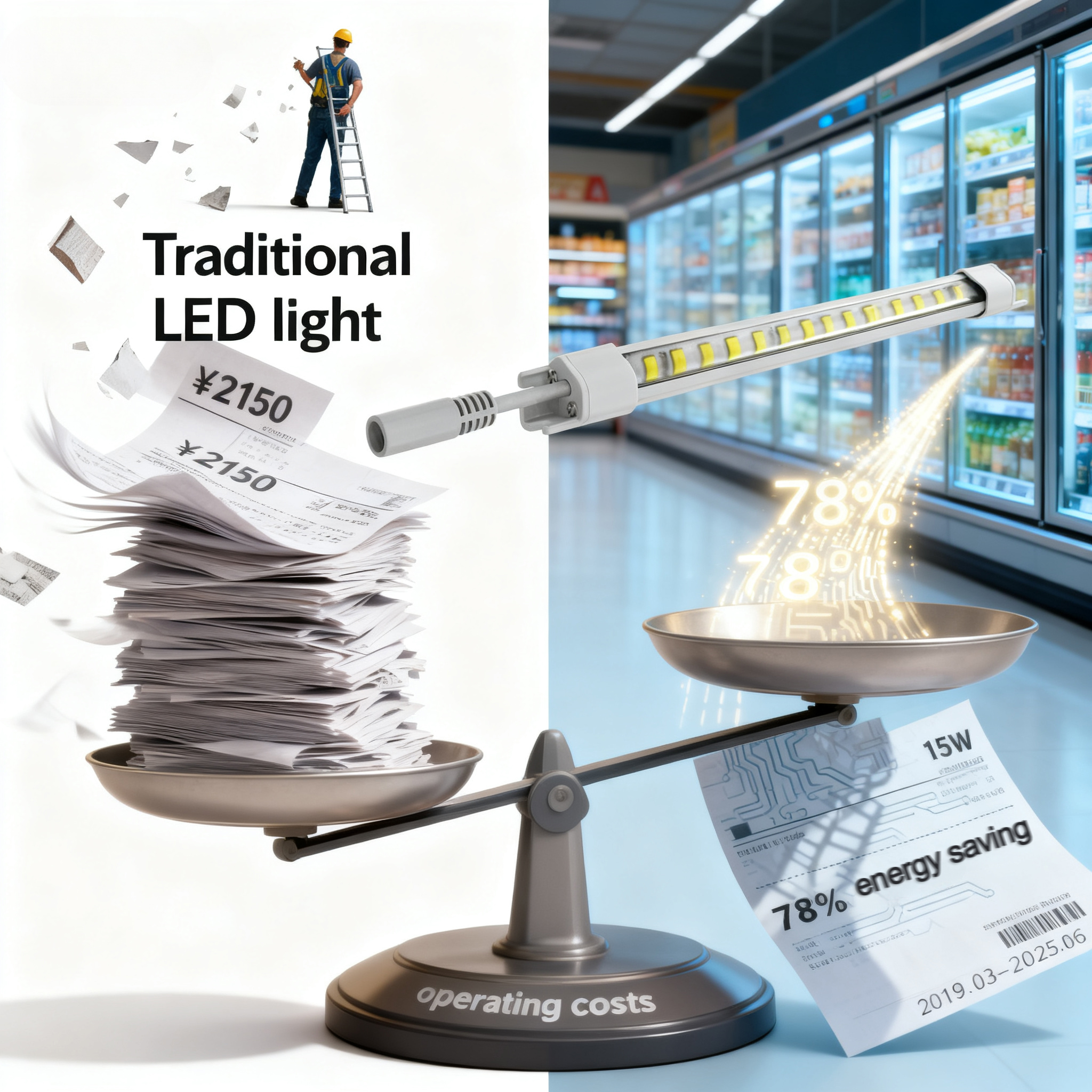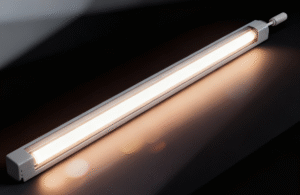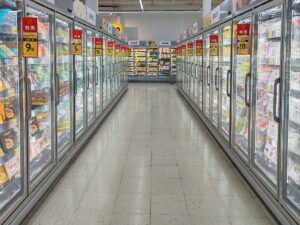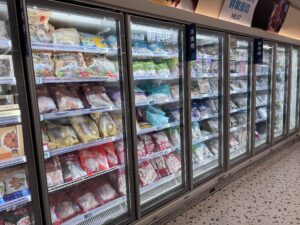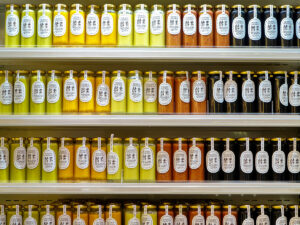Dans l'environnement de la vente au détail, Les congélateurs ne sont pas seulement l'équipement de base de la préservation des marchandises, mais aussi une fenêtre d'affichage cruciale qui influence directement les consommateurs’ purchasing decisions. Freezer display showcase lighting has long transcended the mere function of “illumination”; plutôt, it has become an invisible force that enhances the shopping experience, promotes sales, and shapes brand image, as well as an important medium for delivering emotional value.
Commercial freezer lights must not only withstand the challenges of extreme low-temperature environments but also meet high-intensity usage demands (in freezing conditions, freezer lights typically operate 24 heures par jour). Donc, when selecting commercial freezer lights, it is essential to balance performance with long-term costs to maximize commercial value.
Ⅰ. Analysis of Key Selection Parameters
1. Comparison of Light Source Types
In the lighting selection for commercial freezers, different types of light sources possess distinct characteristics. Below is a detailed comparative analysis of commonly used LED lights and fluorescent lights.
| LED灯 | Fluorescent lamp | |
| Purchase cost | Higher cost compared to fluorescent lamps | The manufacturing technology for LED lamps is relatively mature, and the cost of raw materials is comparatively low, making their prices quite affordable for consumers. |
| Energy efficiency | Low energy consumption, significant energy savings. | consommation d'énergie élevée |
| Lifespan | It can usually last tens of thousands of hours or even longer. | The lifespan of LED lights generally ranges from several thousand hours to over ten thousand hours. |
| Performance | LED lamps excel in low-temperature startup performance, capable of illuminating swiftly and maintaining stable brightness even under extremely cold conditions. They do not suffer from difficulties in starting up or flickering, ensuring reliable lighting for freezers and refrigerators in various low-temperature environments. | In low-temperature environments, the luminous efficiency of fluorescent lamps drops significantly, resulting in dimmer brightness. |
| Environmental friendliness | LED lamps are free from harmful substances like mercury, resulting in minimal environmental impact during production, usage, and disposal processes. This aligns with modern environmental protection standards. | Fluorescent tubes contain a small amount of mercury, which, if vaporized into the environment, can contaminate air, soil, and water sources, posing potential threats to human health. |
2. Brightness and Uniformity
In the field of commercial refrigerator lighting, the brightness and uniformity of lamps directly affect the display effectiveness of products, thereby influencing consumers’ shopping experiences. Good lighting conditions create a comfortable shopping atmosphere and guide customers to make purchases. Cependant, in practical application scenarios, traditional LED lights exhibit significant drawbacks in glass-door refrigerators.
Traditional LED light sources typically have a beam angle ranging from 120° to 130°. Cependant, in specific application scenarios such as glass-door refrigerated cabinets, their effective illumination range is actually only about 90°. Par conséquent, approximately 30° of light spills beyond the targeted area. This light spillage not only wastes energy and increases operational costs but may also cause unnecessary light pollution in the surrounding environment of the refrigerator. Par exemple, in supermarkets, excessive spill light can interfere with customers’ vision and negatively impact their shopping experience in other areas.
En plus, when vertical fixtures are installed in the middle of the door frame, a noticeable dark zone appears in the central area. This not only undermines the display effectiveness of products, making some items difficult for consumers to see clearly, but also reduces the overall aesthetic appeal and professionalism of the refrigerator’s lighting.
To address the aforementioned issues with traditional LED lights in glass-door refrigerated cabinets, fixtures incorporating polarizing technology have emerged. By utilizing specialized lens designs, polarizing technology focuses light onto the surface of products, significantly enhancing illumination quality. Fixtures equipped with polarizing technology offer the following core advantages:
● Maximizing Light Efficiency: Eliminates ineffective light scattering by concentrating 100% of the light within a targeted 90° area.
● Improving Illumination Uniformity: Avoids dark zones at the edges seen in traditional lighting fixtures, reducing surface brightness variation by over 60%.
● Optimizing Energy Efficiency: Reduces energy consumption by 30% under the same illumination requirements while extending the lifespan of the fixtures.
In summary, in commercial refrigerator lighting applications such as glass-door refrigerated cabinets, adopting fixtures with polarizing technology significantly enhances brightness and uniformity. This addresses the shortcomings of traditional lighting methods, delivering better economic returns and a more professional image for businesses while providing consumers with a superior shopping experience.
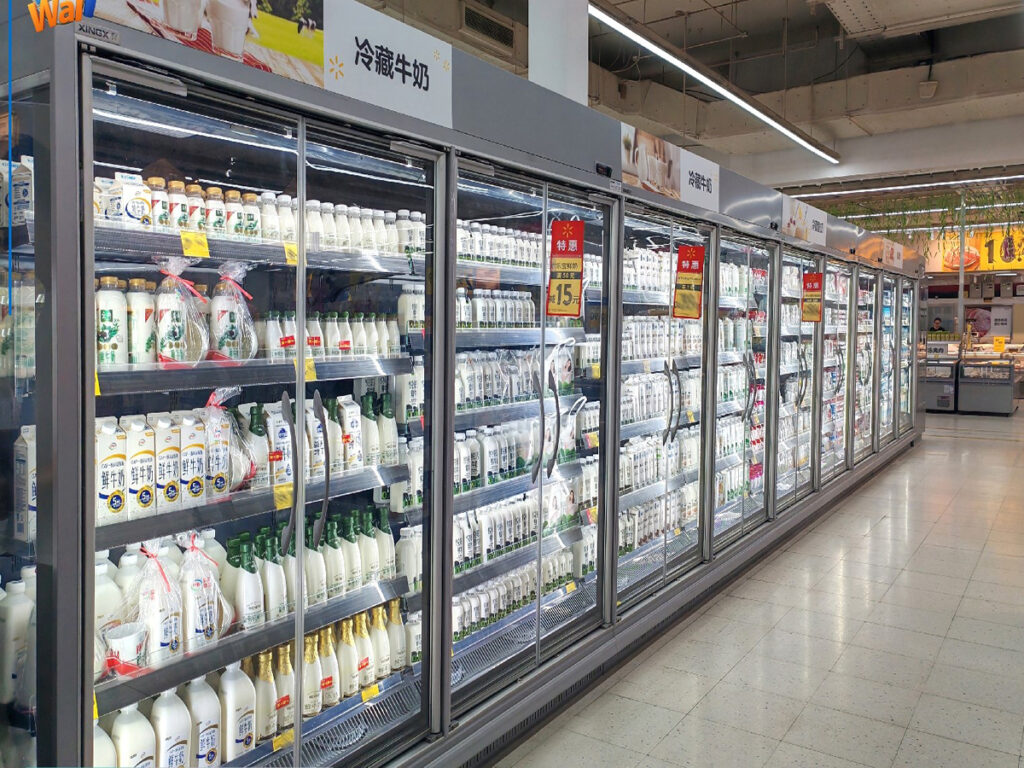
3. Color Temperature Selection
In the lighting design of commercial refrigerators, color temperature is a crucial factor to consider when selecting lighting fixtures. Different color temperatures impart distinct impressions on products, and only by using the appropriate color temperature can products be presented vividly and attractively.
● Cool White Light (5000-6500K): Cool white light creates a bright and clean atmosphere. This color temperature significantly enhances the perception of freshness, making it particularly suitable for displaying fresh produce such as seafood. The cool white light highlights the crystal-clear texture, allowing consumers to sense the freshness and high quality of the seafood.
● Neutral Light (4000-4500K): Neutral light falls between cool white and warm white, offering a versatile color temperature choice. It provides a comfortable and natural feel while accurately reproducing the true colors of products. Neutral light is suitable for displaying most products, including food, household items, and cosmetics. It faithfully presents the original colors of products, enabling consumers to see them in their most authentic form. Par exemple, when displaying bread, pastries, and other food items, neutral light prevents color distortion caused by excessively high or low color temperatures, allowing consumers to clearly observe the golden hue of bread and the delicate texture of pastries, thereby facilitating more informed purchasing decisions.
● Warm White Light (2700-3000K): Warm white light is soft and yellowish, creating a cozy and inviting ambiance. It is ideal for wine cabinets, where it adds a unique charm. En plus, warm white light effectively enhances the presentation of high-end food products, stimulating consumers’ visual senses and boosting purchase rates.
In practical refrigerator lighting design, merchants can flexibly select the appropriate color temperature based on the type and characteristics of the products displayed in the refrigerator, as well as the overall style and positioning of the store. Of course, to ensure optimal results, consulting with professional lighting sales experts is advisable.
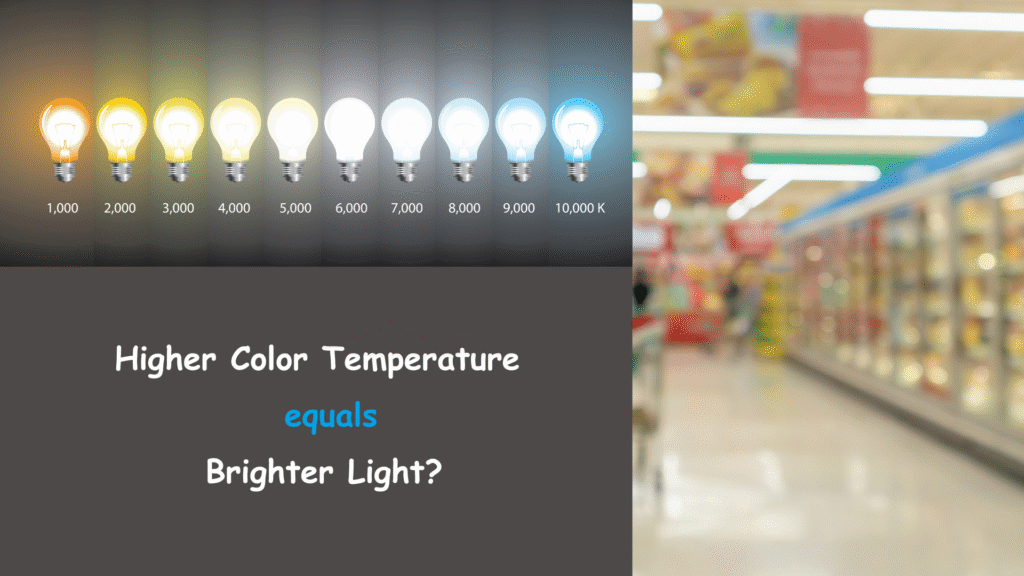
4. Ingress Protection (IP) Rating
The IP (Ingress Protection) Rating, also known as the International Protection Rating, is a standard established by the International Electrotechnical Commission (IEC) to define the level of protection provided by an electrical equipment enclosure against the intrusion of foreign objects. The IP rating consists of two digits: the first digit indicates the level of protection against dust, while the second digit indicates the level of protection against water. The higher the digits, the greater the protection capability.
Dust Protection Level (First Digit): Ranging from 0 à 6, where 0 signifies no protection and 6 denotes complete prevention of dust ingress. At level 6, the amount of dust accumulation inside the equipment during normal operation does not affect its performance or safety.
Water Protection Level (Second Digit): Ranging from 0 to 9K, where 0 indicates no protection and 9K represents the ability to withstand high-pressure, high-temperature water jet sprays. Different digits correspond to varying degrees of water resistance. Par exemple, a rating of 5 means protection against water jets from all directions projected by a nozzle, preventing damage to the equipment.
In commercial refrigerator lighting systems, the IP rating is a critical consideration. This is because the internal temperature of refrigerators is typically low, especially in freezer sections where temperatures can drop to -18°C or even lower. In such cold environments, water vapor in the air easily condenses into frost around the lighting fixtures. During business hours, when refrigerator doors are opened, the relatively higher external temperature creates a stark contrast with the cold interior, causing the ice inside to melt into water. Some of this melted water may flow directly into the lighting fixtures, while suspended condensed water in the air can also easily infiltrate them. If the lighting fixtures have insufficient water resistance, the moisture from melted frost may seep inside, leading to issues such as electrical short circuits, component damage, and disrupted normal operation. Donc, a lighting fixture with an IP65 rating, which offers robust water and dust protection, is crucial.
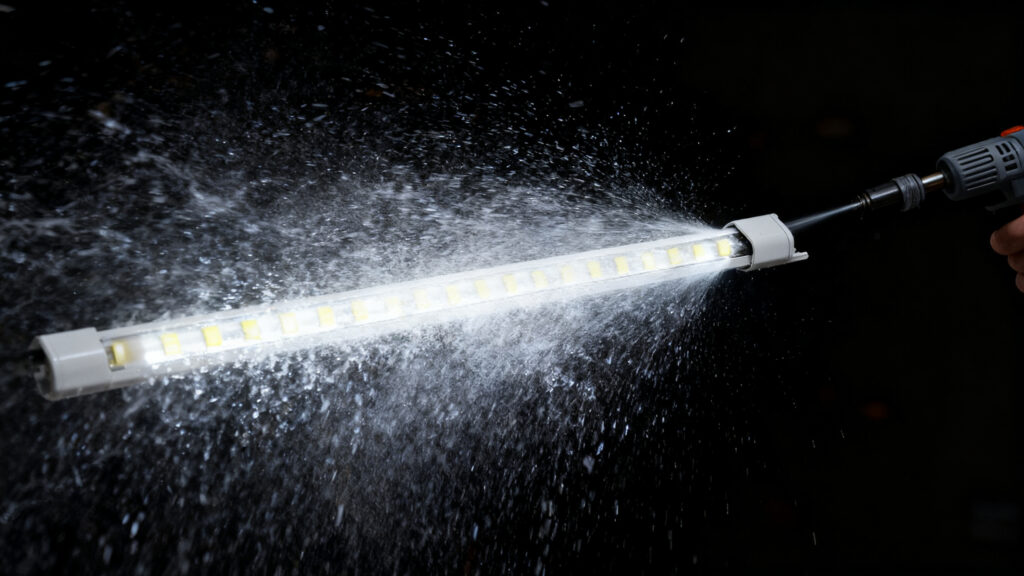
5. Résistance aux basses températures
Why must commercial refrigerator lights possess low-temperature resistance? The reasons are as follows:
Material Brittleness: Ordinary lighting fixtures may experience uneven material contraction rates at low temperatures, leading to cracking of the housing, failure of seals, or brittleness and fracture of the internal printed circuit board (PCB).
Condensation Risk: When refrigerator doors are frequently opened and closed, warm and humid external air enters and condenses into water droplets on the surface of the low-temperature lighting fixtures. This can potentially cause short circuits or corrosion.
LED Driver Stability: Low temperatures can lead to a decrease in the capacitance of electrolytic capacitors and changes in the saturation level of inductor cores, affecting the output stability of the driver circuit and causing flickering or insufficient brightness.
Donc, low-temperature resistance is a core indicator for evaluating the stability of lighting fixtures.
II. Installation and Adaptability Considerations
In the practical application of commercial refrigerator lighting systems, installation and adaptability are crucial factors that directly influence lighting effects, space utilization, and overall aesthetics and practicality. The following sections will elaborate on these aspects from three perspectives: size and structure, ease of installation, and adaptability options.
1. Size and Structure
Given the limited internal space of refrigerators, compact lighting fixtures can significantly conserve valuable space. En plus, from an aesthetic standpoint, smaller fixtures are easier to conceal within the refrigerator, avoiding the exposed appearance of traditional lighting and creating an effect where light is visible but the fixture itself is not. This approach illuminates the internal products without making the lighting fixture a visual focal point, enhancing the overall aesthetic appeal of the refrigerator.
2. Ease of Installation
Different customers’ refrigerator structures and application scenarios vary, and flexible installation methods for lighting fixtures can greatly save installation time and facilitate future replacements.
The SPU series from Laidishine features a regular triangular shape with two mounting surfaces, meeting diverse installation requirements. This lamp also comes with two types of mounting brackets, ensuring adaptability to cabinets of various materials. Its convenient installation effectively addresses installation challenges.
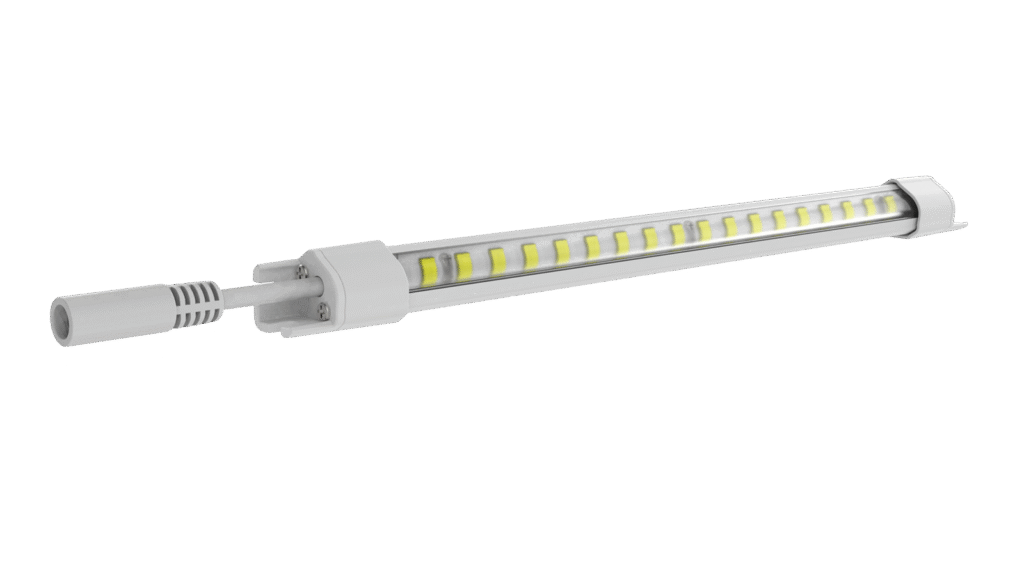
3. Adaptability Options
Shelf Lighting for Multi-deck showcase opened: Sliding door and air curtain cabinets have unique lighting requirements, where shelf lighting must simultaneously fulfill the dual functions of being non-glaring and adequately illuminating products. We recommend using frosted lampshades. With their unique material and optical properties, frosted lampshades emit light in an elliptical pattern, uniformly and softly scattering the light to avoid the glare caused by direct illumination. This provides customers with a comfortable visual experience while fully illuminating the products inside the refrigerator, highlighting their details and features to attract customers’ attention.
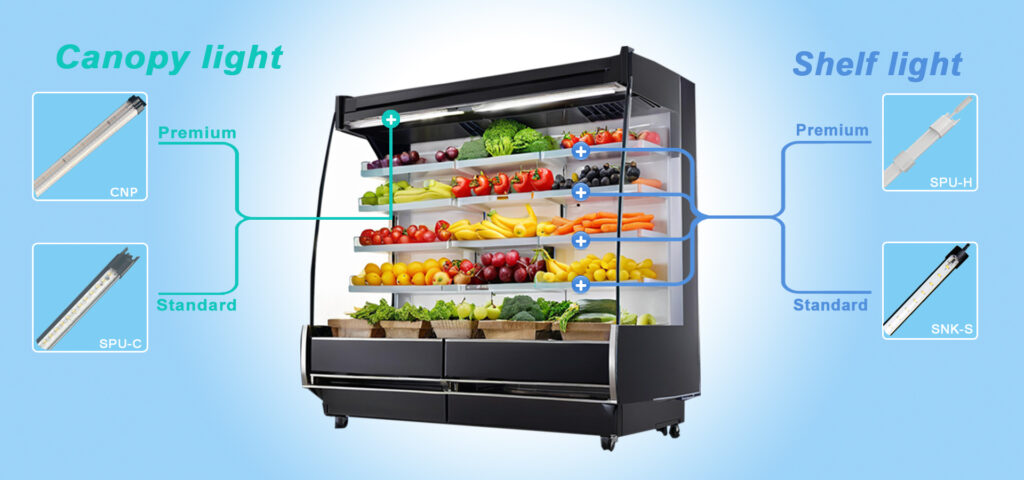
Post Lighting for Glass door refrigerated display showcases: If post lighting is used in glass door refrigerated display showcases, it is advisable to choose models with lenses. Lighting fixtures equipped with polarizing technology offer significant advantages in light focusing, accurately directing light onto the areas that require illumination and effectively avoiding the generation of ineffective light, thereby improving light utilization efficiency. En plus, polarizing technology can effectively address the issue of dim lighting behind door frames, ensuring uniform and adequate illumination in all corners of the refrigerator and creating a more perfect lighting effect.
Lighting for Island and Service Cabinets: Due to their special structures and usage scenarios, island and service cabinets have higher requirements for the beam angle of lighting. These refrigerators typically have a narrow beam angle, and using ordinary lighting fixtures can lead to uneven illumination and insufficient light in some areas. Donc, it is essential to choose lighting fixtures with polarizing technology. Polarizing technology can precisely control the light according to the actual needs of the island and service cabinets, achieving efficient focusing and uniform distribution of light within a limited angle. This meets the special lighting requirements of these refrigerators and presents customers with a clear and vibrant product image.
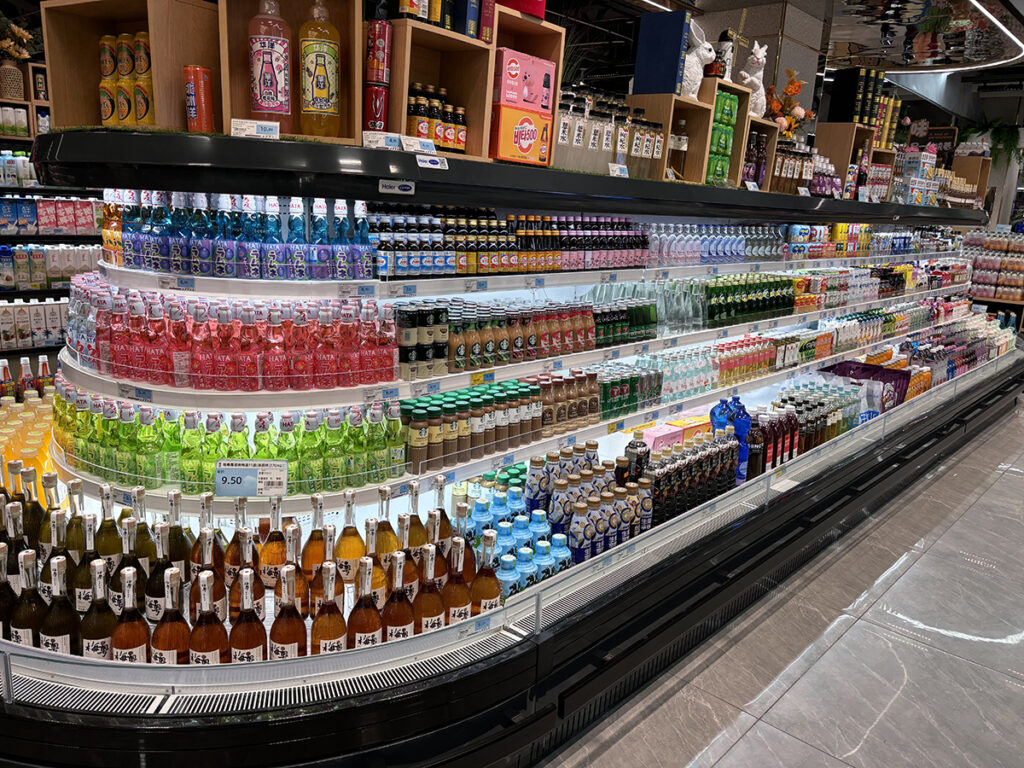
III. Energy Efficiency and Cost Analysis
Energy Consumption Comparison Between LED Lights and Traditional Light Sources (Calculating ROI Based on 10 Hours of Daily Usage)
| light source type | power(W) | annual electricity consumption(KW/H) | electricity bill.8元/KWH) | ROI Payback Period |
| LED light | 18 | 65.7 | 52.56 | 8-12 months |
| lampe fluorescente | 40 | 146 | 116.8 | 3-4 années |
| lampe halogène | 60 | 219 | 175.2 | over 5 années |
The differences in operating voltage of lighting fixtures have a significant impact on electricity cost, especially considering that electricity expenses account for approximately 45% of an operator’s annual costs. Let’s compare high-voltage T8 fluorescent tubes with low-voltage LED systems.
| voltage type | High-Voltage Lighting Fixture | Low-Voltage Lighting Fixture |
| Full Length of the Light Fixture | 1206 | 1202 |
| Lamp Lifespan | >50000h L70 B20@10℃ | >30000h L70 B20 @10℃ |
| Luminous Efficacy | 150LM / W | 110LM / W |
| Number of Lights for Cabinet | 10 | 10 |
| Power per Light Fixture | 4.8 | 16 |
| Total Power per Cabinet | 48 | 160 |
Based on the above data, LED lamps in low-voltage systems are the preferred choice.
IV. Common Troubleshooting
• Excessive lumen depreciation of LED chips: Check the thermal design. For every 10°C rise in junction temperature, the lifespan is reduced by 50%.
• Frequent flickering: Power supply drive issue. Replace with a constant-current driver module.
• Short circuit caused by condensation: Verify sealing integrity and conduct waterproof testing on the lighting fixture for broader context.
Contact us for more industry knowledge on refrigerator lighting. https://www.laidishine.com/contact/


